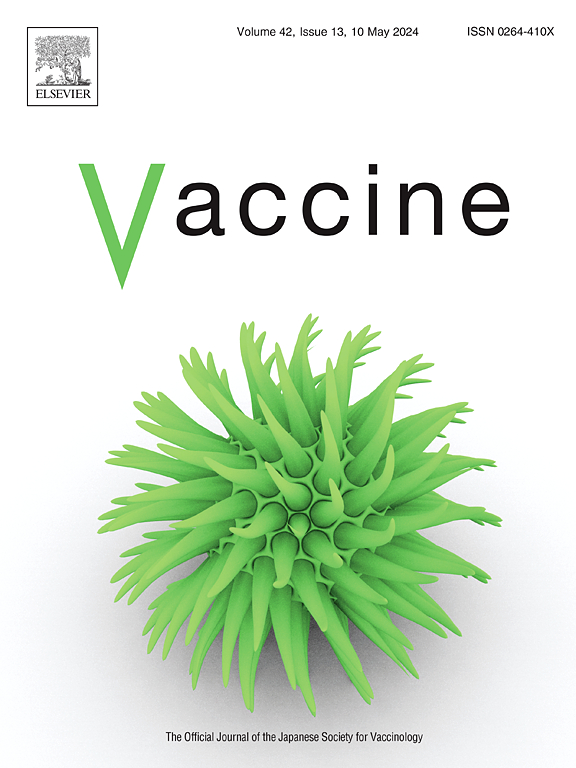揭示对流感疫苗异质反应的动态转录组学和免疫细胞特征
IF 4.5
3区 医学
Q2 IMMUNOLOGY
引用次数: 0
摘要
季节性流感可引起各种呼吸道感染和严重并发症,疫苗接种对感染控制仍然至关重要。然而,疫苗免疫反应的个体间差异仍然存在,分子决定因素仍然不明确。本研究旨在通过纵向转录组学和免疫细胞数据阐明与疫苗应答相关的时间基因表达模式和免疫细胞动力学。方法利用免疫特征数据资源(IS2)的基因表达、免疫细胞组成和免疫应答数据。差异表达和时间序列分析确定了与疫苗反应相关的关键转录特征和动态模式。加权基因共表达网络分析(WGCNA)揭示了与疫苗反应相关的基因模块,并阐明了它们的途径富集特征。最后,采用线性混合效应模型来检测12个免疫细胞亚群在不同反应组中的时间趋势,而采用广义线性混合模型(GLMM)来评估差异表达基因与免疫细胞之间的关联。结果总体分析显示,接种后第1天差异表达基因最多,时间序列分析发现15个基因动态变化显著。值得注意的是,干扰素刺激基因GBP1和GBP2在高应答者中表现出短暂的上调,与抗体滴度升高呈显著正相关。WGCNA分析鉴定出3个主要富集于免疫调节和细胞信号通路的免疫应答相关模块。免疫细胞分析显示,在高应答者中,幼稚B细胞具有明显的双相模式。此外,JAG2被发现与多个免疫细胞群相关。这些发现揭示了流感疫苗反应背后的复杂调控网络。结论本研究强调了流感疫苗接种后早期基因表达和免疫细胞动态变化在形成免疫应答中的重要性。瞬时调节基因与特异性免疫细胞动力学的鉴定表明,它们可能是疫苗反应的关键决定因素。本文章由计算机程序翻译,如有差异,请以英文原文为准。
Revealing dynamic transcriptomic and immune cell signatures underlying heterogeneous responses to influenza vaccination
Background
Seasonal influenza can cause variable respiratory infections and severe complications, and vaccination remains essential for infection control. Nevertheless, substantial inter-individual variability in vaccine immune responses persists, and the molecular determinants remain poorly defined. This study aimed to elucidate the temporal gene expression patterns and immune cell dynamics associated with vaccine response through longitudinal transcriptomic and immune cell data.
Methods
We utilized gene expression, immune cell composition, and immune response data from Immune Signatures Data Resource (IS2). Differential expression and time-series analyses identified key transcriptional features and dynamic patterns linked to vaccine response. Weighted gene co-expression network analysis (WGCNA) revealed gene modules associated with vaccine response and elucidating their pathway enrichment characteristics. Finally, the linear mixed-effects model was used to examine the temporal trends of 12 immune cell subsets across response groups, while generalized linear mixed models (GLMM) were employed to assess associations between differential expression genes and immune cell.
Results
Overall analysis revealed the most differential expression genes at day 1 post-vaccination and time-series analysis identified 15 genes with significant dynamic changes. Notably, interferon-stimulated genes GBP1 and GBP2 exhibited transient upregulation in high responders, showing significant positive correlation with antibody titer increases. WGCNA analysis identified 3 immune response-associated modules that were primarily enriched in immune regulation and cell signaling pathways. Immune cell analysis revealed a distinct biphasic pattern of Naive B cells in the high responders. Furthermore, JAG2 was found to be associated with multiple immune cell populations. These findings reveal a complex regulatory network underlying influenza vaccine response.
Conclusion
Our study highlights the importance of early gene expression and dynamic immune cell changes following influenza vaccination in shaping the immune response. The identification of transiently regulated genes alongside specific immune cell dynamics suggests they may serve as key determinants of vaccine response.
求助全文
通过发布文献求助,成功后即可免费获取论文全文。
去求助
来源期刊

Vaccine
医学-免疫学
CiteScore
8.70
自引率
5.50%
发文量
992
审稿时长
131 days
期刊介绍:
Vaccine is unique in publishing the highest quality science across all disciplines relevant to the field of vaccinology - all original article submissions across basic and clinical research, vaccine manufacturing, history, public policy, behavioral science and ethics, social sciences, safety, and many other related areas are welcomed. The submission categories as given in the Guide for Authors indicate where we receive the most papers. Papers outside these major areas are also welcome and authors are encouraged to contact us with specific questions.
 求助内容:
求助内容: 应助结果提醒方式:
应助结果提醒方式:


